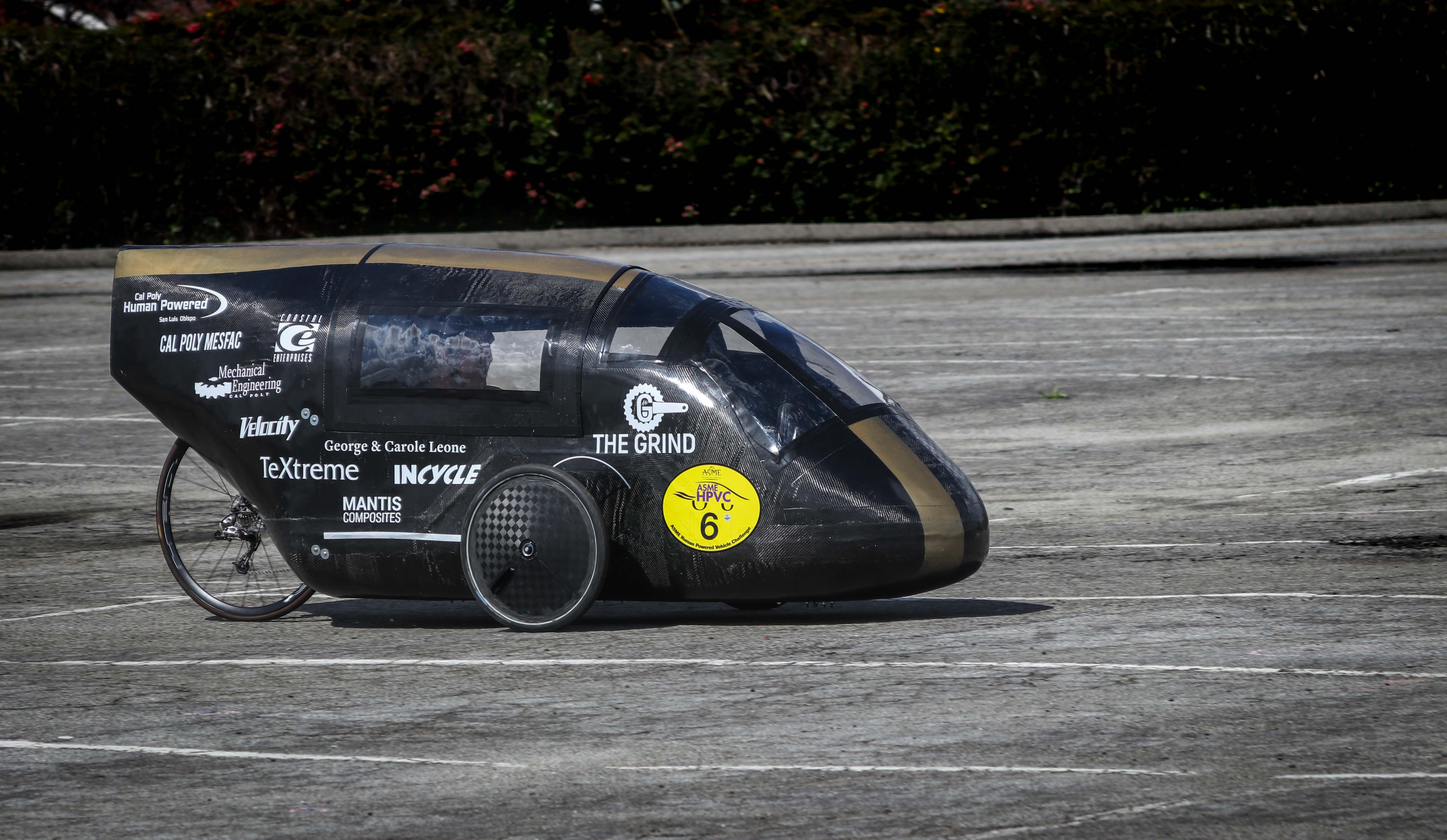For our first project, we wanted to do a fun but an interesting topic that would grab readers attention easily. We decided to revolve our story around the Human Powered Vehicle Club and their process of building a man-powered vehicle. The HPV club is just one of the many clubs at Cal Poly that work as a team to create fun experiences through building a human-powered vehicle, which is one of the many reasons why we chose the topic.

As we began research on the club, we had no idea what we were really getting ourselves into. The building process of the bike, the passion the club members have for the field, and the members’ anticipation for the competition gave us a bigger, better, more interesting story than we could have ever asked for.
When we first began the project, all we knew was that the club built bicycles powered by a human. We didn’t really realize why, or for what purpose until we looked further into the story. Once we started researching various platforms of social media, we found that this club was gearing up for the World Human Powered Speed Competition located at Battle Mountain, Nevada. This was something that really intrigued us and made us want more information when there were no other articles and little information about the club. Once we found a topic that was intriguing we set out to find what interested people the most about the story.
Although I didn’t receive much traffic throughout the various platforms I posted to, I did find that people wanted to know more about the members of the club and the process of building the vehicle. We found that they were interested in the story itself, which gave us great insight to furthering along our research.
Through social media, our reporter Alyssa Mavor was also able to direct readers to the clubs social media, “I wanted readers to directly have access to the HPV Instagram so they could get a visual of what the club is all about and what exactly they do.” This helped people better understand the story we were pulling together and what exactly it consisted of. While social media was helpful for finding our niche in the story, making quality interviews allowed us to get the facts and really dig further into the club and why they do what they do.

We found that with each human-powered vehicle, there is a specific jockey that is tailored to fit the vehicle. One of our reporters, Carter Harrington learned through an interview that the building process of the vehicle is more strategic than people think, “Going into the interview, I figured the team just built a vehicle and found a jockey or rider to fill in. They actually build these vehicles to precisely fit the jockey so if one thing goes wrong or the jockey gets hurt, they have to start from scratch.” By tailoring these vehicles to measure the height and weight of the jockey, the breathing patterns, as well as how well the rider pedals and steers, it allows for the vehicle to increase in speed.

While the building process of the vehicle is vital to the success of the team, the club has found more of a family through long nights working on the project. When interviewing Chief Engineer, Derek Fromm, reporters Goldberg and Harrington found just how committed the members of the HPV club are, “…I realized that being dedicated to this wasn’t something I had to force myself to do. Because all of a sudden, I was in love with this project and it became easy. It became easy to pull all-nighters, to design and build this thing. It became easy to kind of put everything else on the side just because I wanted to get this done so badly”, said Fromm. Our video reporter Goldberg, was surprised to see all the hard work that actually goes into making a human-powered vehicle and was surprised with how much time and effort the club puts into the project. “I didn’t realize how extensive the process was. It really shows how determined the club is and how they’ve really put their heart and soul into not only the vehicle but the club itself,” he said.
We have enjoyed putting this story together in hopes that people enjoy the hard work and dedication the HPV club has. We wish them all the best luck at the World Human Powered Speed Competition.
For more information, you can go to their website.